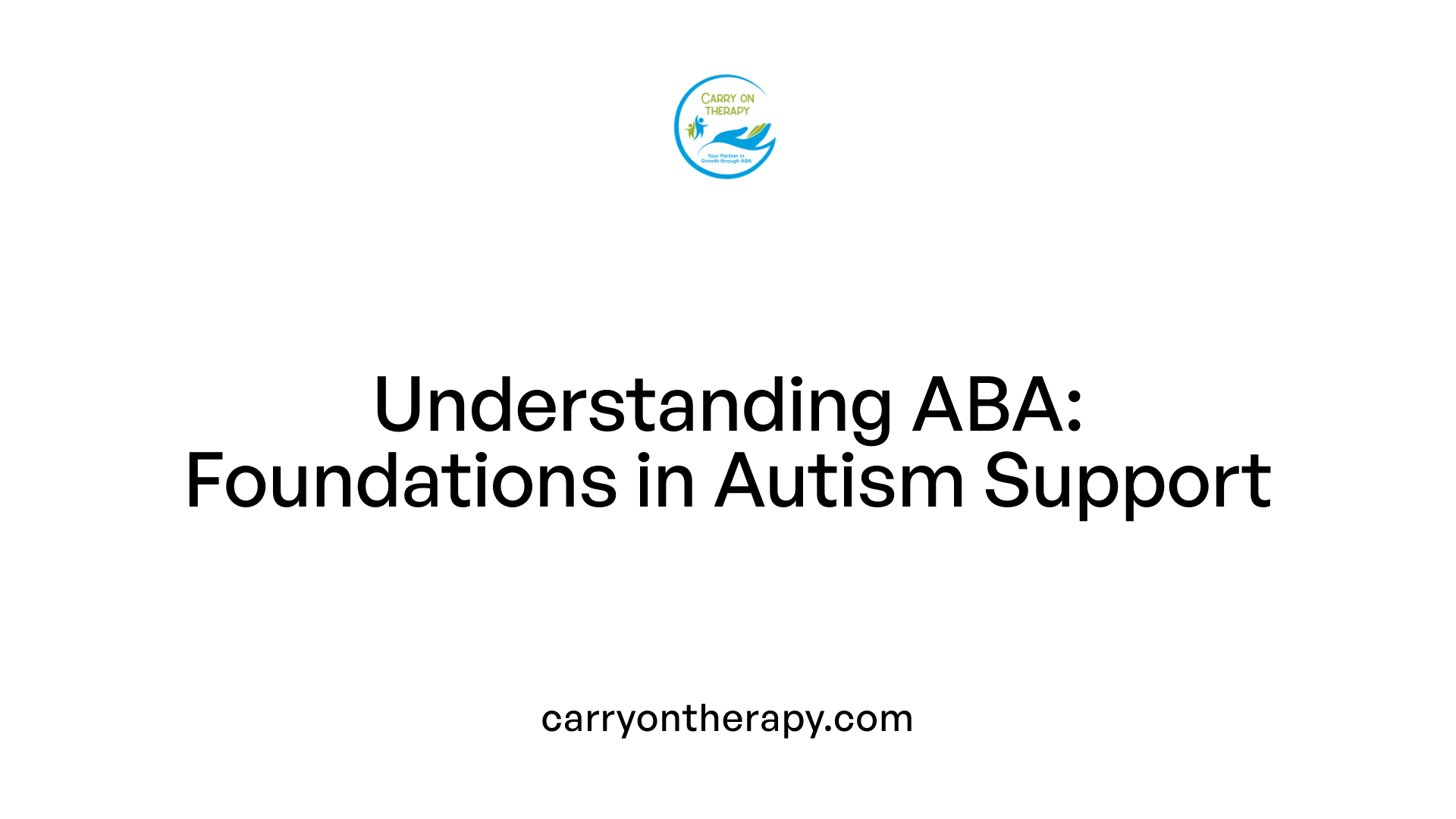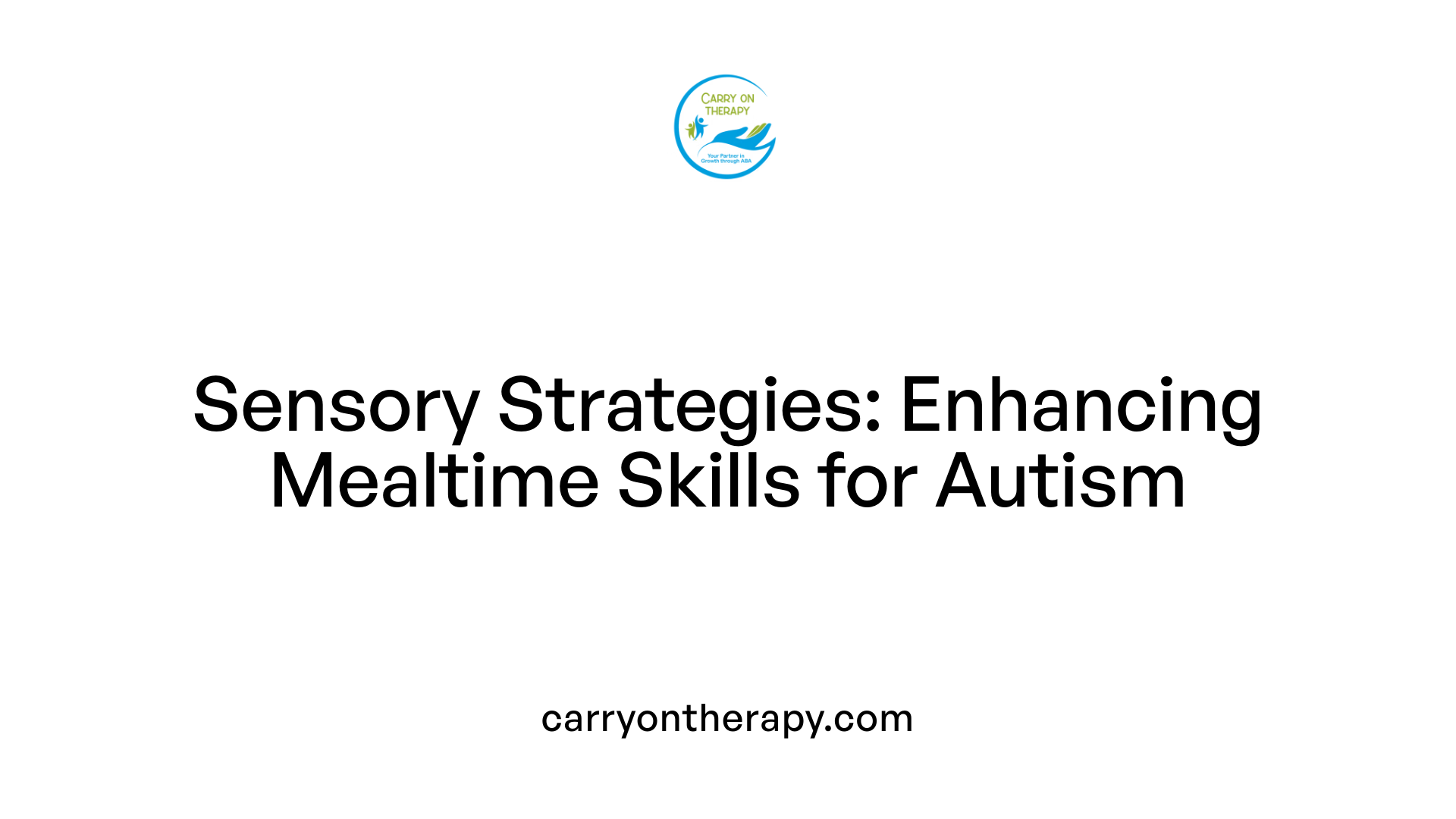Addressing Picky Eating in Autism
Innovative Behavioral and Therapeutic Approaches to Picky Eating in Autism

Understanding Selective Eating in Autism Spectrum Disorder
Selective or picky eating is a common challenge across all ages for individuals with autism spectrum disorder (ASD). This behavior often stems from sensory processing difficulties, oral motor challenges, and other underlying medical or neurological factors. Addressing picky eating is critical, as it impacts nutrition, health, and quality of life. This article explores cutting-edge interventions, including applied behavior analysis (ABA) therapy, feeding therapy, and specialized group programs designed to improve food acceptance and mealtime behaviors among children with autism.
Applied Behavior Analysis Therapy: Foundations and Benefits for Autism and Selective Eating

What is applied behavior analysis (ABA) therapy in the context of autism treatment?
Applied Behavior Analysis (ABA) therapy is a scientific, evidence-based approach designed to help individuals with autism spectrum disorder (ASD) improve social, communication, and daily living skills. It relies on analyzing the Antecedent-Behavior-Consequence (A-B-C) model, using positive reinforcement to encourage desirable behaviors. ABA programs are highly customized for each person based on detailed assessments by Board Certified Behavior Analysts (BCBAs). Common ABA methods include Discrete Trial Training, Pivotal Response Treatment, and the Early Start Denver Model. The therapy aims to increase helpful actions and reduce harmful or problematic behaviors, supporting individuals across home, school, and community settings.
How does ABA therapy modify selective eating behavior in autism?
ABA therapy addresses selective or picky eating by targeting feeding behaviors through structured behavioral interventions. Techniques focus on gradually increasing food acceptance using positive reinforcement to encourage trying new foods. Programs may break down eating skills into manageable steps or use character-based teaching tools to make trying new foods fun and engaging. For example, group programs employing characters like "Esther the Eater" promote expanding food choices in a supportive routine. These strategies improve food flexibility and exposure, reducing selective eating patterns that are common in individuals with ASD.
Benefits of ABA therapy for individuals with autism
ABA therapy empowers individuals with autism by teaching functional skills in communication, social interaction, and self-care while reducing behaviors that interfere with quality of life. It enables greater independence, social participation, and adaptive functioning. Particularly for selective eating, ABA-based programs help increase accepted foods, lower anxiety around new foods, and build mealtime skills in a controlled, supportive way. Evidence shows early and intensive ABA interventions lead to better language development, social skills, and overall outcomes.
Customization and professional delivery of ABA therapies
The success of ABA therapy lies in its personalized design. Professionals, primarily BCBAs and Registered Behavior Technicians (RBTs), create and implement treatment plans tailored to each individual’s unique needs, preferences, and sensitivities. These plans include selecting specific reinforcers and teaching approaches that resonate with the individual’s interests and learning style. Collaboration with caregivers and continuous data monitoring support ongoing adjustments, optimizing progress. Often, a multidisciplinary team including speech-language pathologists and occupational therapists works together to address complex needs, ensuring a well-rounded, individualized therapy experience.
Specialized Behavioral Programs: The BUFFET Approach for Older Children with ASD

Challenges in Treating Selective Eating Beyond Early Childhood
Selective eating, or picky eating, is common among individuals with autism spectrum disorder (ASD) of all ages. However, most behavioral programs for picky eating are intensive and primarily target early childhood. This leaves a significant treatment gap for older children, adolescents, and adults with autism who continue to struggle with selective eating.
Development and Goals of the BUFFET Program
To address this unmet need, the BUFFET program was developed as a 14-week, multi-family group cognitive behavioral treatment specifically designed for children aged 8 to 12 with ASD. Its primary goal is to increase food flexibility and exposure by encouraging children to try and accept a wider variety of foods. The program aims to fill the gap in treatment options available for older children and adolescents with ASD experiencing selective eating behaviors.
Structure and Initial Outcomes of BUFFET
BUFFET employs cognitive behavioral strategies within a group setting involving multiple families. This approach fosters a supportive environment where children and caregivers learn together. Initial pilot data indicate that the program is feasible to implement in outpatient settings and may offer benefits in reducing picky eating among children with ASD. By engaging families directly, the program strengthens the support network crucial for sustained eating behavior change.
Importance of Multi-Family Group Cognitive Behavioral Therapy
Utilizing a multi-family group model, BUFFET leverages social learning and mutual support, which can be especially effective for children with ASD. Cognitive behavioral therapy techniques help children develop flexible eating habits by changing thought patterns and behaviors related to food. Engaging multiple families simultaneously enhances motivation and provides shared experiences that reduce feelings of isolation often felt by families managing selective eating in autism.
Feeding Therapy and Sensory-Based Strategies to Improve Mealtime Skills

Role of feeding therapy professionals and targets
Feeding therapy for children with autism spectrum disorder involves specialized professionals such as occupational therapists, speech-language pathologists, and dietitians. These therapists focus on developing necessary skills for mealtime success, including muscle strength, chewing, swallowing, and oral motor coordination. Treatment is highly individualized, starting with thorough assessments of the child's diet, sensory reactions, and environment. The ultimate aims include expanding accepted foods, reducing anxiety around new foods, improving oral-motor skills, and fostering positive mealtime behaviors.
Common causes of food avoidance in autism
Several factors contribute to food avoidance in children with autism. Low muscle tone and oral motor challenges can make eating physically difficult. Medical issues may also impact feeding. Sensory processing differences are a major influence, affecting how children perceive textures, smells, and sounds related to food. These sensory sensitivities often result in selective eating patterns.
Sensory processing disorders and their impact on eating
Sensory processing disorders alter how children interpret sensory input, shaping their food preferences and tolerances. For example, certain textures may be overwhelming, or strong food smells may deter eating. Noise and other environmental factors can increase mealtime stress. Understanding these sensory challenges is essential to tailoring effective interventions.
Techniques such as the Sequential Oral Sensory Approach and Food Chaining
Feeding therapy incorporates several evidence-based techniques. The Sequential Oral Sensory (SOS) Approach gradually introduces sensory experiences related to food, helping children build tolerance. Food Chaining uses similar foods with small changes to gently expand a child's diet. Sensory integration and behavioral strategies also play critical roles in overcoming selective eating.
Use of movement activities and play with food
Engaging children in movement activities before eating—such as jumping or marching—can enhance attention and body awareness, preparing them for feeding sessions. Additionally, play involving food-like toys or textures helps reduce sensory sensitivities by making exposure enjoyable and less threatening. These sensory-based strategies support children in becoming more flexible and willing eaters.
Creating Supportive Mealtime Environments and Involving Caregivers

Use of Visual Schedules and Routine to Reduce Mealtime Anxiety
Establishing clear and predictable mealtime routines can significantly lessen anxiety for children with autism. Visual schedules provide a simple way to outline each step of the eating process, making expectations transparent and reducing sensory overwhelm. This clarity helps children feel more secure and better prepared to accept new foods.
Parental Coaching and Involvement in Feeding Therapy
Active participation of caregivers is essential in feeding therapy. Parents and caregivers receive coaching to create a calm, structured eating environment at home, reinforcing progress made during therapy sessions. This partnership supports consistency, which is critical for improving eating habits over time.
Therapeutic Goals Including Anxiety Reduction and Mealtime Behavior
Feeding therapy aims to increase the variety of foods a child accepts while reducing anxiety associated with new tastes and textures. Teaching appropriate mealtime behaviors, such as sitting calmly and using utensils, is also a focus. Achieving these goals fosters a more positive and flexible attitude toward food.
Benefits of Involving Children in Serving Food and Making Mealtimes Fun
Engaging children in food preparation and serving can empower them and reduce resistance to trying new foods. Incorporating playful activities, like using toys or characters associated with eating, helps make mealtimes enjoyable rather than stressful. This positive association encourages greater food acceptance and willingness to explore different flavors and textures.
Classroom-Based Behavioral Interventions and Innovative Engagement Tools

Group-Based Programs for Preschool Children with ASD
Several classroom-based group programs have been developed specifically for preschool children with autism spectrum disorder (ASD) to address selective eating behaviors. These programs integrate behavioral analysis principles to create structured and supportive environments that promote food variety and acceptance.
Behavioral Analysis Principles Applied in Classrooms
Using applied behavior analysis (ABA) techniques, these interventions leverage consistent routines and positive reinforcement to encourage children with ASD to try new foods. ABA's focus on observable behaviors allows educators to systematically introduce new eating experiences in a way that is measurable and adaptable to individual needs.
Use of Characters Like 'Esther the Eater' to Encourage Food Variety
Engaging tools such as the character 'Esther the Eater' serve as motivational aids in these programs. Esther acts as a friendly, relatable figure designed to teach children about expanding their food choices. This character-based approach makes the introduction of new foods feel more accessible and less intimidating for young children.
How Routine, Fun Activities Improve Eating Behaviors in Special Education Settings
Integrating fun, routine activities into these programs creates a classroom environment where mealtimes are predictable and enjoyable. Activities that include playful interactions with food and consistent meal schedules reduce anxiety and increase willingness to explore new textures and flavors. This combination helps foster more flexible eating patterns and supports overall nutritional health among children with ASD in special education classrooms.
Towards Flexible and Nutritious Eating Patterns in Autism
Addressing picky eating in individuals with autism requires a multifaceted approach that blends behavioral therapies, feeding interventions, sensory integration strategies, and active caregiver involvement. ABA therapy provides a foundational, evidence-based framework that can be customized to each individual's unique needs, promoting effective and lasting behavior change. Targeted programs like the BUFFET initiative fill crucial gaps by supporting older children and adolescents, while feeding therapy helps develop mealtime skills essential for safe and enjoyable eating experiences. Sensory and play-based techniques, combined with structured routines and participation, reduce anxiety and increase food variety. Ultimately, these varied interventions collaborate to foster more flexible, nutritious, and positive eating habits, greatly enhancing quality of life and wellbeing for individuals with autism and their families.
References
- The BUFFET Program: Development of a Cognitive ...
- Autism Feeding Therapy: Targeting Picky Eating
- Helping Picky Eaters in Classroom Groups
- ABA Feeding Therapy for Autistic Children
- Is ABA Therapy Customized for Each Individual's Needs?
- Applied Behavior Analysis (ABA)
- Personalizing ABA Therapy for Children with Autism







